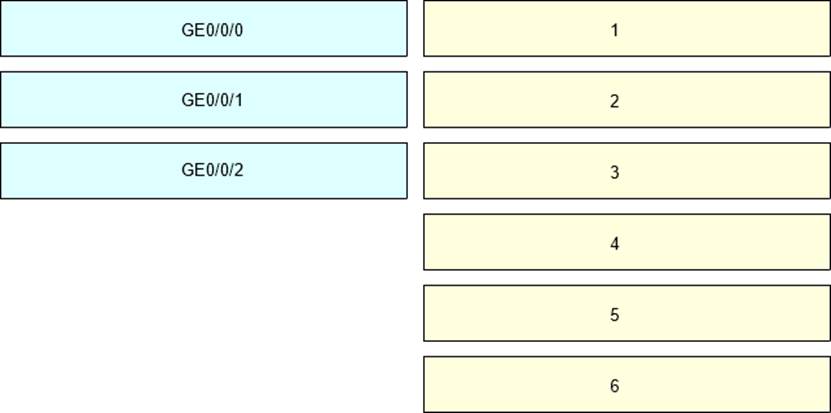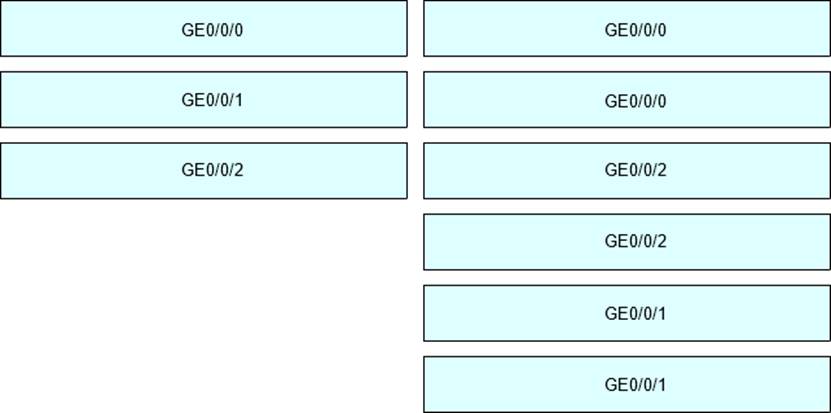Huawei H12-831_V1.0 Übungsprüfungen
Zuletzt aktualisiert am 05.09.2025- Prüfungscode: H12-831_V1.0
- Prüfungsname: HCIP-Datacom-Advanced Routing & Switching Technology V1.0
- Zertifizierungsanbieter: Huawei
- Zuletzt aktualisiert am: 05.09.2025
In an MPLS network, data is forwarded based on information such as FIB, MILFE, and ILM. Among these informations, which of the following options is mainly used for information association?
- A . Label output
- B . Tunnel ID
- C . Tag operation type
- D . FEC
In the OSPFv3 network shown in the figure, area 1 is a stub area, area 2 is a normal area, and area 3 is an NSSA area. The IPv6 address of the R6 Lopback0 interface is 2000::6/128. The Router ID of each device is 10.0.XX, where X is the device number. "stub no-summary" is configured in area 1 of R2. Which of the following descriptions is correct?
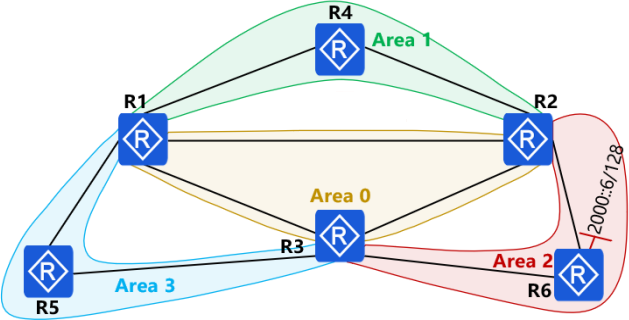
- A . The R4 LSDB contains the Inter-Area-Prefix-LSA describing 2000::6/128 generated by R1.
- B . The path for R4 to send data packets to 2000::6 is R4-R2-R6
- C . There is no route entry for 2000::6/128 in R4’s routing table.
- D . The path for R4 to send data packets to 2000::6 is R4-R1-R5-R3-R6
In the OSPF network shown in the figure, the area numbers are marked in the figure, where area 1 is a common area, area 2 is a stub area, and area 3 is an NSSA area. If R5 introduces an external route 10.0.5.5/32, which of the following routers does not have a route entry for 10.0.5.5/32 in its routing table?
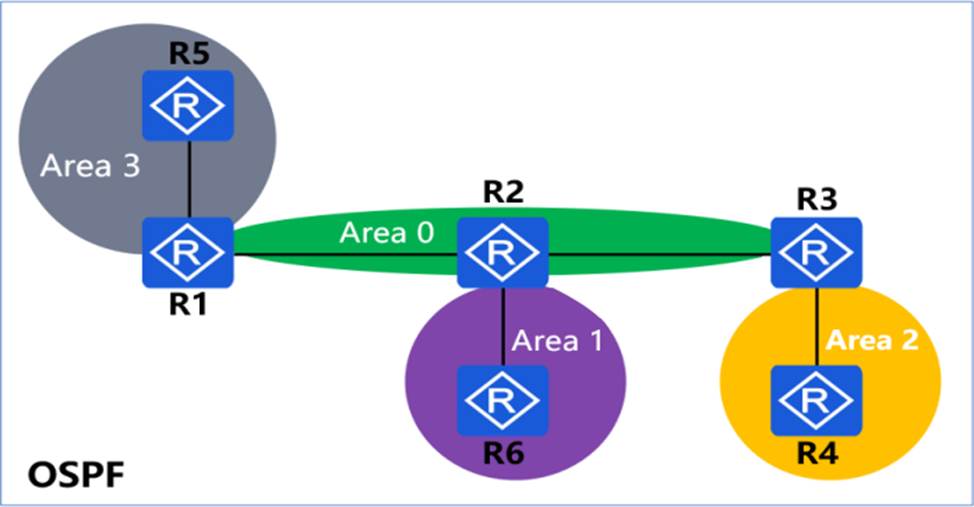
- A . R4
- B . R6
- C . R2
- D . R3
In order to publish the external routes introduced by the NSSA area to other areas, the Type 7 LSA needs to be converted into a Type 5 LSA so that it can be announced in the entire OSPF network. By default, the router that performs LSA conversion is the area border router (ABR) with the largest router ID in the NSSA area.
- A . True
- B . False
Huawei NetEngine AR6120 and AR6121 both have two service interface card slots, and these two slots can be merged into one slot.
- A . True
- B . False
In the network shown in the figure, OSPF is deployed between R2 and R1, and OSPF is also enabled on R2’s GE0/0/1 interface. IS-IS is deployed between R2 and R3. In order for R1 to obtain the route to 10.0.3.3/32, IS-IS routes are introduced into OSPF routes on R2. The FA address in the Type5 LSA generated by R2 is ().

In the OSPFv3 network shown in the figure, routers are interconnected using Ethernet links.
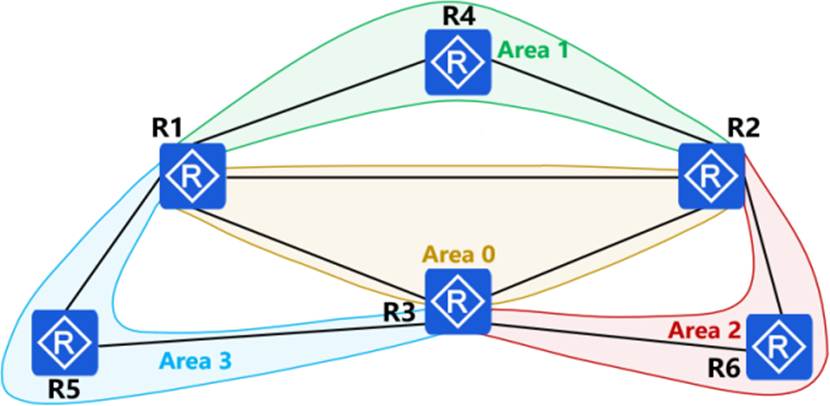
By default, the number of DRs in this network is which of the following?
- A . 6
- B . 9
- C . 8
- D . 7
In the network shown in the figure, R1 and R2 establish an EBGP neighbor relationship through the Loopback0 interface. R1 imports the route 2001::1/128 into BGP, and then cancels the import of the route. After R1 cancels the import of the route, the value of the Next Hop field of MP_UREACH_NLRI in the Update message sent by R1 is 2000::1.
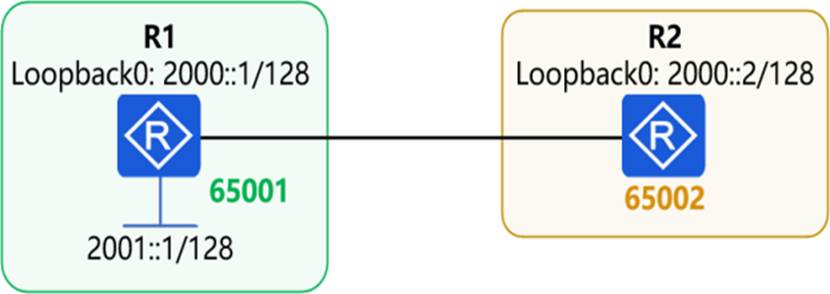
- A . True
- B . False
The entries in the MAC address table are divided into dynamic entries, static entries and black hole entries. At the same time, there is also a service type of MAC address entry in the MAC address table of the switch, which is generally converted from dynamic entries.
- A . True
- B . False
In the OSPFv3 network shown in the figure, the Router IDs of R1, R2, and R3 are 10.0.1.1, 10.0.2.2, and 10.0.3.3 respectively.
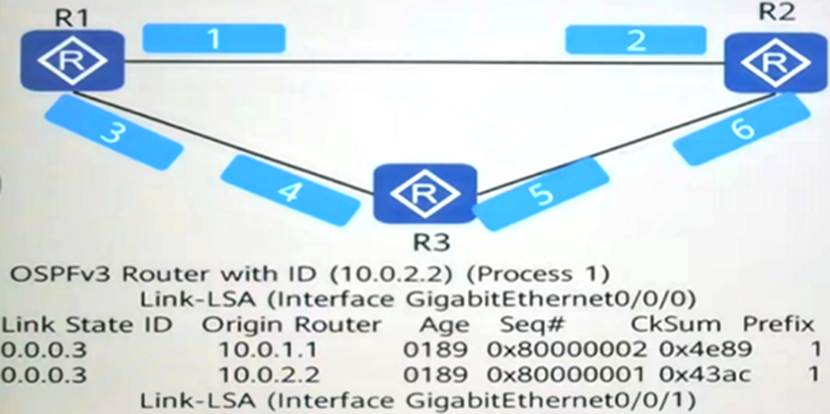
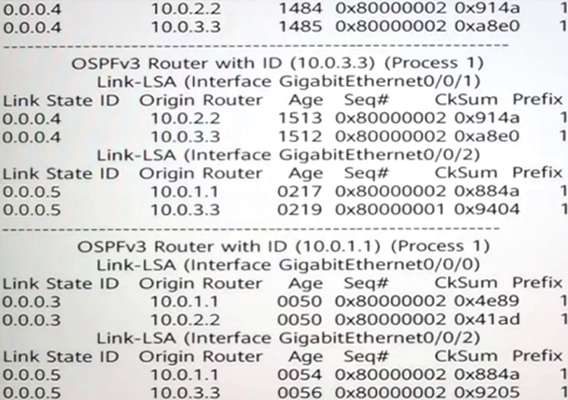
Please complete the port number on each route according to the LSDB information.
